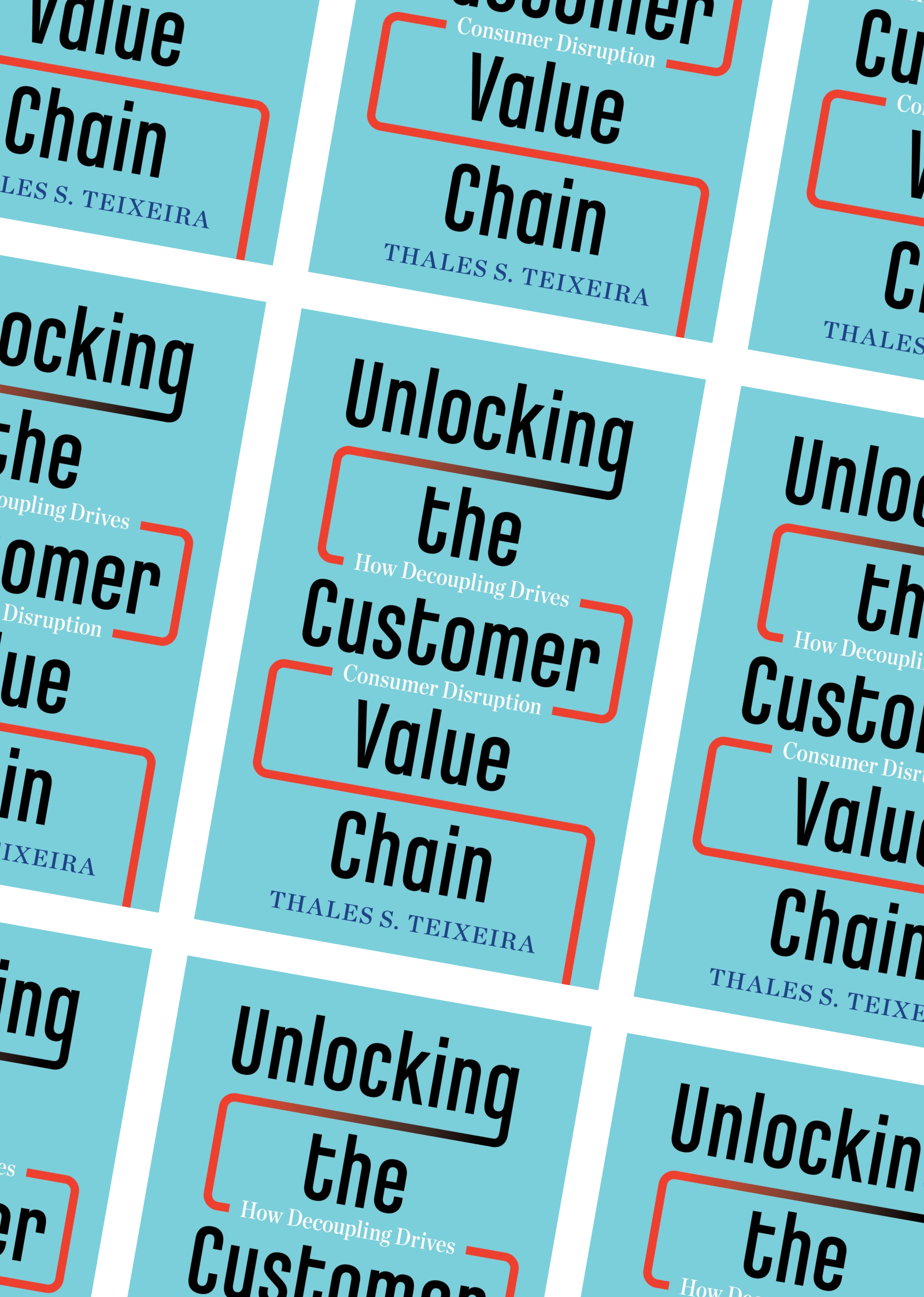How disruption happens —and what you can do about it
The blueprints and secret formulas for disruption across every industry
If you're an established business that fears disruption — or a new business that craves it — is it even possible to know how disruption works?
In many cases, the term is buzzy, ethereal, intangible ... far from scientific, repeatable, or figureoutable.
But it turns out, disruption does follow a formula.
It is not a one-off event that steals into the night to turn industries on its head. And it is not a random occurrence with no discernible pattern.
“Our natural tendency is to think that the problems we face are unique to us.”
This is not the case with disruption.
In the book Unlocking the Customer Value Chain, Thales Teixeira shares an incredible amount of research and detail on what he's observed with disruption: how it begins, what it looks like, how to prevent it from happening to you.
I took a ton of notes. Let me try to distill them here into some key takeaways.
The disruption formula
In short:
Businesses serve customers.
Customers follow a discrete set of steps in order to choose, purchase, and use a product or service.
Business model disruption happens because of decoupling: stealing customers by “decoupling” specific activities that customers normally perform in the course of shopping.
Disruption does not happen because of technological innovation.
Disruption happens because new businesses find ways to deliver value to customers in new ways.
The crux of disruption is the Customer Value Chain (CVC), which has a series of distinct stages that customers take to choose, purchase, and use a product or service.
At any one of these stages, disruption can occur.
Typical steps in a customer journey
Each business's CVC contains value-creating activities (good for the consumer), value-capturing activities (good for the business), and value-eroding activities (neutral friction points like driving to a store or entering billing details).
Decoupling can happen within any one of these three value activities.
Often, you see decoupling happen at the non-value-creating portions of the chain. Remove the friction for customers, and you've found your strategy for disruption.
Examples of how disruption occurred within the Customer Value Chain
For example:
Tivo decoupled watching TV (a value-creating activity) from watching ads (a non-value-creating activity), and they disrupted the TV industry.
Zipcar decoupled using a car from maintaining a car.
Zynga decoupled playing a videogame from purchasing a videogame.
SaaS decoupled using software from owning software.
Additionally, you could decouple the value-creation activities, taking some for yourself and leaving some for incumbents. Twitch did this with video game spectatorship and left the video game-making to incumbents like Electronic Arts.
How to understand your Customer Value Chain
The first step to understanding disruption is to understand yourself. This starts with the Customer Value Chain and your business model.
Step one: Map the stages of your Customer Value Chain, specifically focusing on the value activities within the chain: where you create value, where you charge for it, and where you sometimes erode it. Use the model of Evaluate > Choose > Purchase > Consume to make sure you map all the stops.
You might find the exercise similar to a customer journey map. (I highly recommend this also.)
Step two: After you've mapped your Customer Value Chain, ask yourself these questions:
Can you deliver more value in the value-creating activities without charging more?
Can you afford to capture less in the value-charging activities, everything else being equal?
Can you reduce eroded customer value without diminishing what you’re offering or capturing?
Takeaways
For established businesses, I think one of the greatest lessons from the book is this:
You should spend as much time or more evaluating and evolving your firm’s business model(s) as you do worrying about new technologies.
I find it very tempting to think about new technologies or new-fangled features when it comes to innovation and defensibility, but disruption occurs at a much higher-level that that. It occurs all the way up to the business model.



